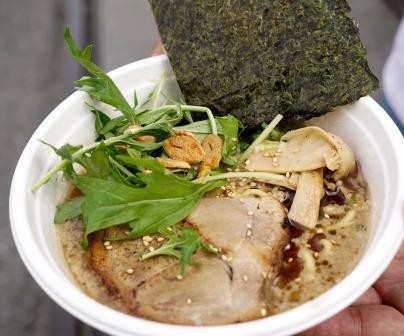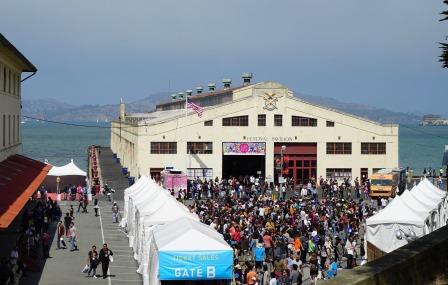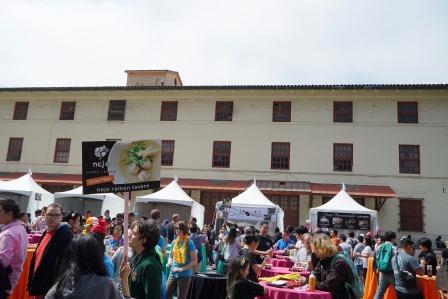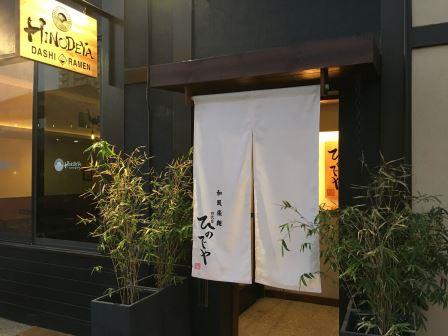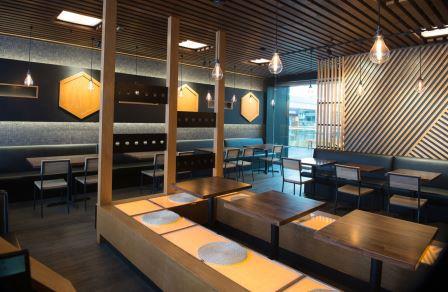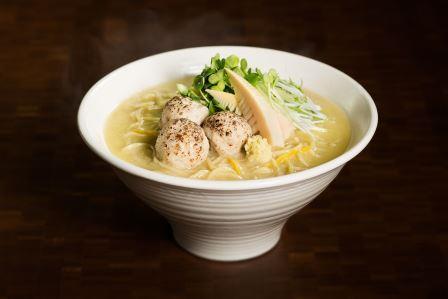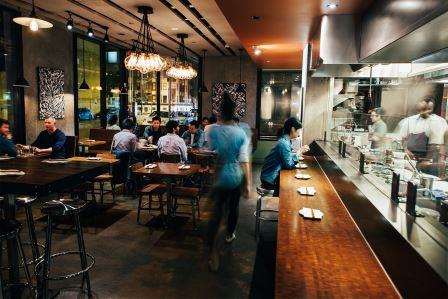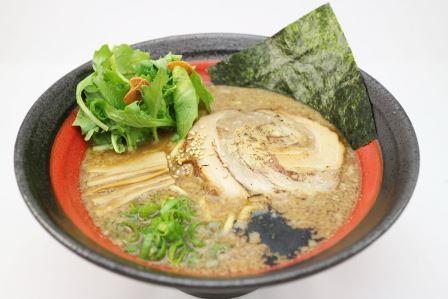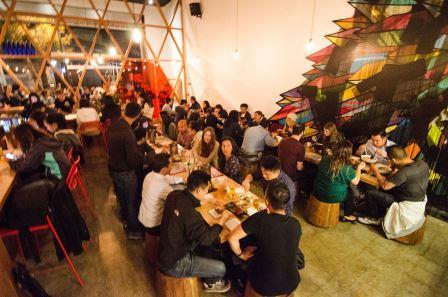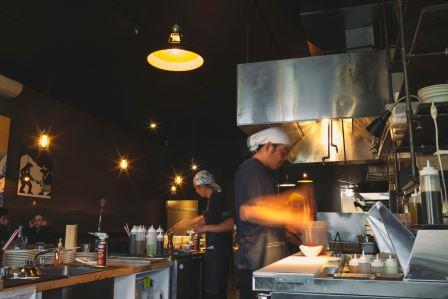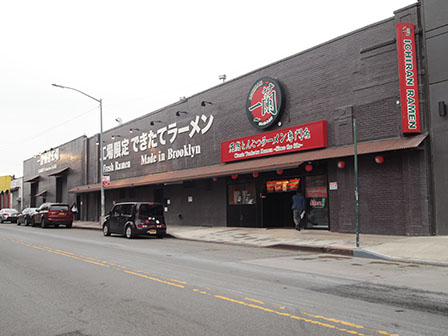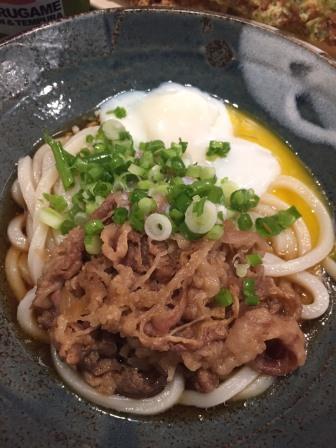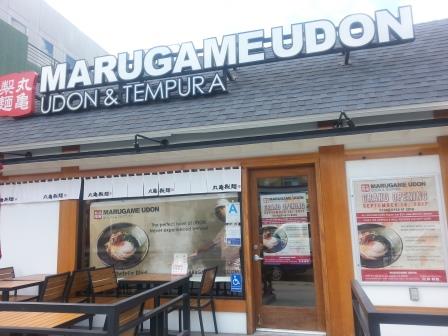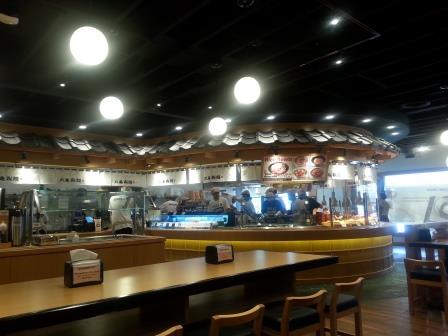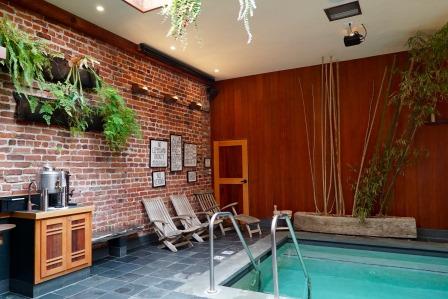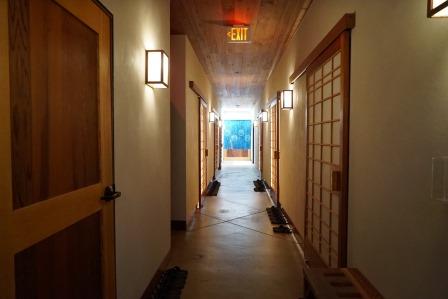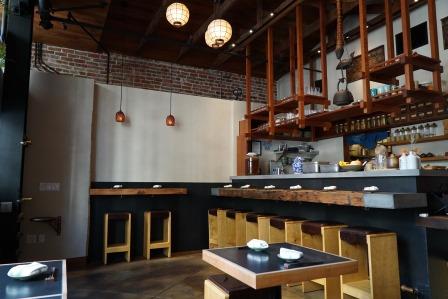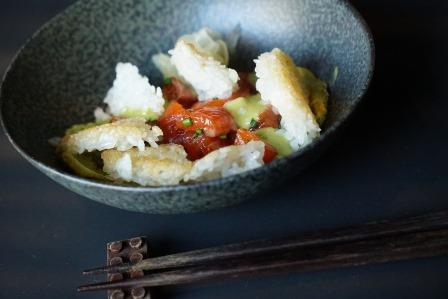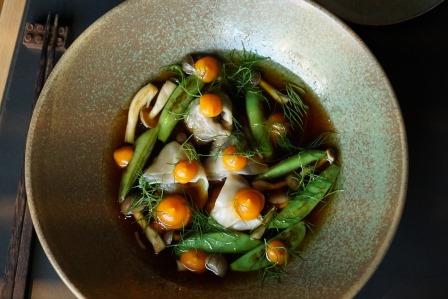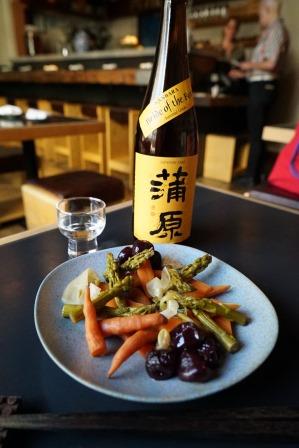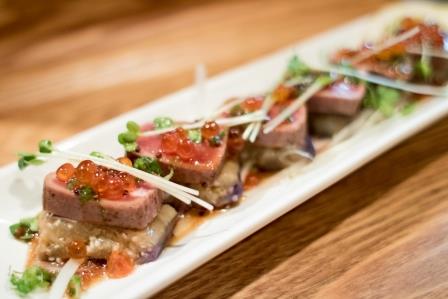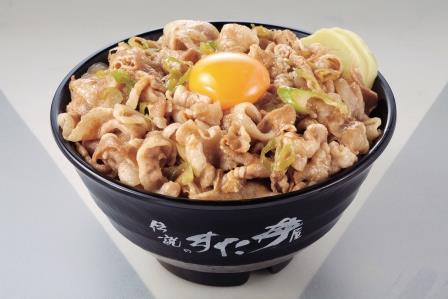SF Ramen Trend, 2017
By Elli Sekine
The ramen boom of San Francisco sees no end in sight, and continues to enchant local ramen fans. During the past 10-year history of this SF ramen boom, those who took the lead of the first-phase must have been “Izakaya Sozai”, “Katanaya-Ramen”, etc. Among them, the signature dish of “Sozai”, the tonkotsu ramen, was voted as “the meal that you wish to have at least once before you die”, which drove ramen fans to rush in night after night. The truth was that this menu item was something the owner created in his spare time just for fun, but ended up as an item on the menu to finish a meal with. After that, the word “tonkotsu” spread quickly.
In the meantime, in Silicon Valley, “Orenchi” that opened 7 years ago in Santa Clara, had a major impact on the ramen boom by being so popular that people waited as long as 2 hours to get in. Since the “Orenchi” brand had pretty much been established, the second restaurant, stylish, and named “Orenchi Beyond” opened in 2015 in San Francisco, and is attracting a younger generation of people in San Francisco. Some of the restaurants which gathered a lot of attention for their openings in 2016 are “Nojo Ramen Tavern”, the first overseas development of AP Company known for “Tsukada Nojo”, specializing in jidori chicken cooking, “Iza Ramen”, the ramen department of a local popular sushi restaurant called “Blowfish”, and “Mensho Tokyo”, also the first overseas development from Tokyo which is currently breaking through. In Japan Town where the competition is very high, “Waraku” and “Yamadaya” started in LA, and Suzu” used to be the top 3; however, popularity is transitioning to newer restaurants like “Marufuku Ramen” that opened this year, and “Hinodeya Ramen”, also a new overseas development from Japan launched at the end of last year. “Marufuku Ramen” is especially popular; so much so that people form a long line every day. The restaurant that is attracting attention the most among the newly opened ones is “Ippudo”, the Hakata style ramen sanctuary, which is known worldwide, and finally opened in Berkley after a long preparation period.
As a new trend, there is an increase in the number of izakaya-style ramen restaurants which have developed from ramen specialty restaurants by adding a-la-carte dishes and various drinks on the menu. You could spend as much as 40 to 50 dollars per person in such a restaurant. Americans are getting more particular about tastes, and trends are moving toward “local gourmet foods” that offer traditional regional tastes. San Francisco’s ramen business industry is getting more diversified, and competition on a higher level continues to grow.
J-POP Ramen Summit
The “J-POP Summit”, the US’s largest festival of Japanese pop culture, was held on September 9th and 10th at Fort Maison Center. This event was produced by Yoshiyuki Maruyama who triggered the Bay Area ramen culture. The “Ramen Summit” that brought together 5 ramen restaurants, 4 from SF and 1 from Seattle, was a big success, and was very busy throughout with many visitors until the end. People formed a long line in front of every booth, and truly enjoyed comparing bowls of ramen of different popular restaurants, etc., which they can experience only at a festival like this. http://www.j-pop.com/
/////// Introduction of the restaurants ///////
1. Nojo Ramen Tavern
Their signature dish is gorgeous Chicken Paitan ($18.50 at the restaurant), in which a whole chicken leg is in the bowl. The rich thick broth accentuated with ginger and yuzu is profoundly tasty and volumerous. Medium thick curly noodles made of whole wheat flour are custom-made.
http://nojosf.com/
2. YOROSHIKU
It is a popular restaurant in Seattle, and the first time exhibitor of the Ramen Summit. Thier signature dish, made by the owner/chef from Hokkaido, is Spicy Miso ($14 at the restaurant). The broth is an excellent combination of white and red miso with added spicy chilli, and is very well received among Americans.
https://www.yoroshikuseattle.com/
3. Orenchi Beyond
Their signature dish is “Beyond Ramen” ($13.50). Its rich tonkotsu shoyu base with added fish stock and garlic is full of originality, and rich in taste and creates a good balance with medium-thick bouncy curly noodles. As new additions to the menu, they have miso-tamatoe base vegan ramen, tantanmen, etc.
http://orenchi-beyond.com/
4. Marufuku Ramen
Traditional Hakata-style tonkotsu base broth cooked for 20 hours is a good match to its custom-made flavorful straight thin noodles. Their signature dish is Hakata Tonkotsu ($10.99). This restaurant is breaking through by offering the right richness, adjustable spiciness, various topping choices and a rich-variery of a-la-carte dishes.
https://www.marufukuramen.com/
5. Hinodeya Ramen & Bar
This restaurant came to the US for the first time to try to introduce authentic dashi culture. Its delicate flavorful dashi of bonito and konbu coats the medium-thick curly noodles well, and bring out the good taste. Its sophisticated, light-flavored dashi ramen and kappo-style a-la-carte dishes are differentiated from other restaurants, and has established a good reputation.
------------------------------
SFラーメントレンド2017
サンフランシスコのラーメンブームは止まる所を知らない。次から次へと新しいコンセプトの店が登場し、地元のラーメンファンを魅了している。この10 年のSF ラーメンブームの歴史を振り返ってみると、第1次ブームを牽引したのは、「Izakaya Sozai」や「Katanaya-ramen」だろう。そのうち「Sozai」の名物、「豚骨ラーメン」は、ローカル誌の「死ぬ前に一度食べたい一品」に抜擢され、夜な夜なラーメンファンが駆けつけた。しかしこのメニュー、実はオーナーが趣味で作ったシメのメニューだった。それから「tonkotsu」のキーワードは一気に広まった。
一方、シリコンバレー、Santa Claraに7年前に登場した 「Orenchi」は、最長2時間待ちという盛況ぶりでラーメンブームに拍車をかけた。その“Orenchi”ブランドが確立した事もあり2015年、サンフランシスコにお洒落な2号店、「Orenchi Beyond」を開店し、SF の若年層を惹きつけた。2016 年のオープンで注目を浴びたのが、地鶏料理の「塚田農場」で知られるAP カンパニー初の米国進出になる「Nojo Ramen avern」、地元人気寿司店「Blowfish」のラーメンバージョン、「Iza ramen」と、東京から初米国進出でブレーク中の「MenshoTokyo」だ。そしてラーメン店の激戦区、日本街にはそれまで「Waraku」、LA 発祥の「Yamada-ya」、「Suzu」の3強だったが、今年オープンした新店舗「Marufuku Ramen」と去年暮れにオープンした日本からの初進出店、「Hinodeya Ramen」に人気は移行し、中でも「Marufuku」は、連日長蛇の列を成している。新規オープンで最も注目されているのが、長年の準備期間を経てバークレーに新オープンした、世界にその名を轟かす博多ラーメンの殿堂、「Ippudo」だ。
最近の傾向としては、ラーメン専門店から一品料理を加えドリンクの種類も揃えたRamen Izakara が増えている。中には一人の会計が$40 〜50 という店も少なくない。アメリカ人の舌も肥え、流行は地方伝統の味を提供する“ ご当地グルメ” へと移行している。多様化が進むSF ラーメンビジネス業界は一層レベルアップした激戦が続いている。
J-POP ラーメンサミット
全米最大の日本ポップカルチャーの祭典、「J-Pop Summit」 が先日9 月9 日、10 日にFort Maison Center で開催され、 ベイエリアラーメンカルチャーの火付け役、丸山良幸氏がプロデュースした「Ramen Summit」は、SF 4軒とシアトルから1軒の計5店舗が結集し、終始大盛況で幕を閉じた。各ブースにはラーメンファンが長蛇の列を作り、祭りでしか体験できない人気店の一杯を食べ比べするなど堪能していた。http://www.j-pop.com/
/////// ラーメンサミットにラインアップした店舗紹介 ///////
1. Nojo Ramen Tavern
看板メニューは、チキンレッグが丸ごと丼に入ったゴージャスなChickenPaitan(店頭価格$18.50)。こってり濃厚なブロスはジンジャーやゆずの味のアクセントがあり、味わい深くボリューミーな絶品。全粒粉を使用した中太縮れ麺はカスタムメイド。
2. YOROSHIKU
シアトル一の人気店で、今回ラーメンサミットは初出店となる。北海道出身のオーナーシェフが作る看板メニューは、spycymisho( 店頭価格$14)。白味噌と赤味噌の絶妙な合わせでピリ辛チリを加えたブロスでアメリカ人に大好評。サンフランシスコへの進出を考慮中。
3. Orenchi Beyond
看板メニューは「Beyond ramen」($13.50) で、濃厚な豚骨醤油ベースに魚だしとニンニクを加えたオリジナリティ溢れるリッチな味わいで弾力がある縮れ中太麺とのバランスが良い。新作メニューには、味噌トマトベースのビーガンラーメン、担々麺などが揃う。
4. Marufuku Ramen
正統派、博多スタイル豚骨ベース。20 時間煮込んだブロスとカスタムメイドの風味良いストレート細麺との相性が引き立つ。看板メニューは、HakataTonkotsu ($10.99) で、こってりすぎず好みに合わせた辛さや追加トッピングを選べる。一品料理も豊富でブレーク中。
5. Hinodeya Ramen & Bar
本格的な出汁文化を紹介すべく挑んだ米国初進出店。風味豊かなカツオと昆布の繊細な本格和風だしと中太縮れ麺がブロスと程よく絡み美味しさを引き立たせている。代表ラーメンは、HidenyaRamen ($14) で、割烹風な一品料理も人気。「出汁ラーメン」は他店と差別化され、定評を得ている。
The ramen boom of San Francisco sees no end in sight, and continues to enchant local ramen fans. During the past 10-year history of this SF ramen boom, those who took the lead of the first-phase must have been “Izakaya Sozai”, “Katanaya-Ramen”, etc. Among them, the signature dish of “Sozai”, the tonkotsu ramen, was voted as “the meal that you wish to have at least once before you die”, which drove ramen fans to rush in night after night. The truth was that this menu item was something the owner created in his spare time just for fun, but ended up as an item on the menu to finish a meal with. After that, the word “tonkotsu” spread quickly.
In the meantime, in Silicon Valley, “Orenchi” that opened 7 years ago in Santa Clara, had a major impact on the ramen boom by being so popular that people waited as long as 2 hours to get in. Since the “Orenchi” brand had pretty much been established, the second restaurant, stylish, and named “Orenchi Beyond” opened in 2015 in San Francisco, and is attracting a younger generation of people in San Francisco. Some of the restaurants which gathered a lot of attention for their openings in 2016 are “Nojo Ramen Tavern”, the first overseas development of AP Company known for “Tsukada Nojo”, specializing in jidori chicken cooking, “Iza Ramen”, the ramen department of a local popular sushi restaurant called “Blowfish”, and “Mensho Tokyo”, also the first overseas development from Tokyo which is currently breaking through. In Japan Town where the competition is very high, “Waraku” and “Yamadaya” started in LA, and Suzu” used to be the top 3; however, popularity is transitioning to newer restaurants like “Marufuku Ramen” that opened this year, and “Hinodeya Ramen”, also a new overseas development from Japan launched at the end of last year. “Marufuku Ramen” is especially popular; so much so that people form a long line every day. The restaurant that is attracting attention the most among the newly opened ones is “Ippudo”, the Hakata style ramen sanctuary, which is known worldwide, and finally opened in Berkley after a long preparation period.
As a new trend, there is an increase in the number of izakaya-style ramen restaurants which have developed from ramen specialty restaurants by adding a-la-carte dishes and various drinks on the menu. You could spend as much as 40 to 50 dollars per person in such a restaurant. Americans are getting more particular about tastes, and trends are moving toward “local gourmet foods” that offer traditional regional tastes. San Francisco’s ramen business industry is getting more diversified, and competition on a higher level continues to grow.
J-POP Ramen Summit
The “J-POP Summit”, the US’s largest festival of Japanese pop culture, was held on September 9th and 10th at Fort Maison Center. This event was produced by Yoshiyuki Maruyama who triggered the Bay Area ramen culture. The “Ramen Summit” that brought together 5 ramen restaurants, 4 from SF and 1 from Seattle, was a big success, and was very busy throughout with many visitors until the end. People formed a long line in front of every booth, and truly enjoyed comparing bowls of ramen of different popular restaurants, etc., which they can experience only at a festival like this. http://www.j-pop.com/
/////// Introduction of the restaurants ///////
1. Nojo Ramen Tavern
Their signature dish is gorgeous Chicken Paitan ($18.50 at the restaurant), in which a whole chicken leg is in the bowl. The rich thick broth accentuated with ginger and yuzu is profoundly tasty and volumerous. Medium thick curly noodles made of whole wheat flour are custom-made.
http://nojosf.com/
2. YOROSHIKU
It is a popular restaurant in Seattle, and the first time exhibitor of the Ramen Summit. Thier signature dish, made by the owner/chef from Hokkaido, is Spicy Miso ($14 at the restaurant). The broth is an excellent combination of white and red miso with added spicy chilli, and is very well received among Americans.
https://www.yoroshikuseattle.com/
3. Orenchi Beyond
Their signature dish is “Beyond Ramen” ($13.50). Its rich tonkotsu shoyu base with added fish stock and garlic is full of originality, and rich in taste and creates a good balance with medium-thick bouncy curly noodles. As new additions to the menu, they have miso-tamatoe base vegan ramen, tantanmen, etc.
http://orenchi-beyond.com/
4. Marufuku Ramen
Traditional Hakata-style tonkotsu base broth cooked for 20 hours is a good match to its custom-made flavorful straight thin noodles. Their signature dish is Hakata Tonkotsu ($10.99). This restaurant is breaking through by offering the right richness, adjustable spiciness, various topping choices and a rich-variery of a-la-carte dishes.
https://www.marufukuramen.com/
5. Hinodeya Ramen & Bar
This restaurant came to the US for the first time to try to introduce authentic dashi culture. Its delicate flavorful dashi of bonito and konbu coats the medium-thick curly noodles well, and bring out the good taste. Its sophisticated, light-flavored dashi ramen and kappo-style a-la-carte dishes are differentiated from other restaurants, and has established a good reputation.
------------------------------
SFラーメントレンド2017
サンフランシスコのラーメンブームは止まる所を知らない。次から次へと新しいコンセプトの店が登場し、地元のラーメンファンを魅了している。この10 年のSF ラーメンブームの歴史を振り返ってみると、第1次ブームを牽引したのは、「Izakaya Sozai」や「Katanaya-ramen」だろう。そのうち「Sozai」の名物、「豚骨ラーメン」は、ローカル誌の「死ぬ前に一度食べたい一品」に抜擢され、夜な夜なラーメンファンが駆けつけた。しかしこのメニュー、実はオーナーが趣味で作ったシメのメニューだった。それから「tonkotsu」のキーワードは一気に広まった。
一方、シリコンバレー、Santa Claraに7年前に登場した 「Orenchi」は、最長2時間待ちという盛況ぶりでラーメンブームに拍車をかけた。その“Orenchi”ブランドが確立した事もあり2015年、サンフランシスコにお洒落な2号店、「Orenchi Beyond」を開店し、SF の若年層を惹きつけた。2016 年のオープンで注目を浴びたのが、地鶏料理の「塚田農場」で知られるAP カンパニー初の米国進出になる「Nojo Ramen avern」、地元人気寿司店「Blowfish」のラーメンバージョン、「Iza ramen」と、東京から初米国進出でブレーク中の「MenshoTokyo」だ。そしてラーメン店の激戦区、日本街にはそれまで「Waraku」、LA 発祥の「Yamada-ya」、「Suzu」の3強だったが、今年オープンした新店舗「Marufuku Ramen」と去年暮れにオープンした日本からの初進出店、「Hinodeya Ramen」に人気は移行し、中でも「Marufuku」は、連日長蛇の列を成している。新規オープンで最も注目されているのが、長年の準備期間を経てバークレーに新オープンした、世界にその名を轟かす博多ラーメンの殿堂、「Ippudo」だ。
最近の傾向としては、ラーメン専門店から一品料理を加えドリンクの種類も揃えたRamen Izakara が増えている。中には一人の会計が$40 〜50 という店も少なくない。アメリカ人の舌も肥え、流行は地方伝統の味を提供する“ ご当地グルメ” へと移行している。多様化が進むSF ラーメンビジネス業界は一層レベルアップした激戦が続いている。
J-POP ラーメンサミット
全米最大の日本ポップカルチャーの祭典、「J-Pop Summit」 が先日9 月9 日、10 日にFort Maison Center で開催され、 ベイエリアラーメンカルチャーの火付け役、丸山良幸氏がプロデュースした「Ramen Summit」は、SF 4軒とシアトルから1軒の計5店舗が結集し、終始大盛況で幕を閉じた。各ブースにはラーメンファンが長蛇の列を作り、祭りでしか体験できない人気店の一杯を食べ比べするなど堪能していた。http://www.j-pop.com/
/////// ラーメンサミットにラインアップした店舗紹介 ///////
1. Nojo Ramen Tavern
看板メニューは、チキンレッグが丸ごと丼に入ったゴージャスなChickenPaitan(店頭価格$18.50)。こってり濃厚なブロスはジンジャーやゆずの味のアクセントがあり、味わい深くボリューミーな絶品。全粒粉を使用した中太縮れ麺はカスタムメイド。
2. YOROSHIKU
シアトル一の人気店で、今回ラーメンサミットは初出店となる。北海道出身のオーナーシェフが作る看板メニューは、spycymisho( 店頭価格$14)。白味噌と赤味噌の絶妙な合わせでピリ辛チリを加えたブロスでアメリカ人に大好評。サンフランシスコへの進出を考慮中。
3. Orenchi Beyond
看板メニューは「Beyond ramen」($13.50) で、濃厚な豚骨醤油ベースに魚だしとニンニクを加えたオリジナリティ溢れるリッチな味わいで弾力がある縮れ中太麺とのバランスが良い。新作メニューには、味噌トマトベースのビーガンラーメン、担々麺などが揃う。
4. Marufuku Ramen
正統派、博多スタイル豚骨ベース。20 時間煮込んだブロスとカスタムメイドの風味良いストレート細麺との相性が引き立つ。看板メニューは、HakataTonkotsu ($10.99) で、こってりすぎず好みに合わせた辛さや追加トッピングを選べる。一品料理も豊富でブレーク中。
5. Hinodeya Ramen & Bar
本格的な出汁文化を紹介すべく挑んだ米国初進出店。風味豊かなカツオと昆布の繊細な本格和風だしと中太縮れ麺がブロスと程よく絡み美味しさを引き立たせている。代表ラーメンは、HidenyaRamen ($14) で、割烹風な一品料理も人気。「出汁ラーメン」は他店と差別化され、定評を得ている。








